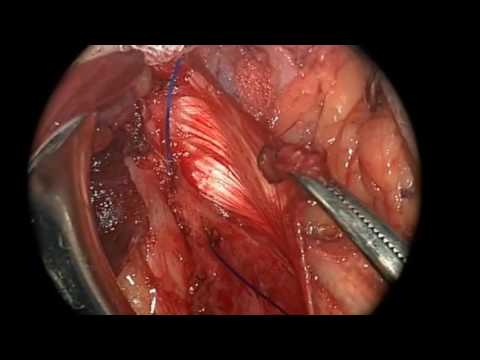If you talk about Bob Feller or Ted Williams, or many other World War II vets that missed years of baseball, you can’t avoid the cost of those missed years. While the answer may be different for some, it’s still one of the great what ifs. Remember, Williams’ numbers all went down significantly after he came back from WW2. He’d have 3,000 hits and close to 600 homers. Feller? He would have been well over 300 wins and close to the Maddux/Clemens numbers.
But it’s the missed opportunities that really stick out. Yogi Berra went to Normandy and came back fine, racking up a few more World Series rings, but there are also the Harry O’Neals.
With COVID-19, we may be heading back into that era. The Imperial College report suggests that we may have to “socially distance” ourselves for eighteen months and while I’ll neither agree or disagree with actual experts, imagine what that does to baseball. No, don’t cry for the poor owners, but what players might someday be the what ifs?
Albert Pujols at 39 would likely lose any chance at 700 homers. It’s already a long shot, given his last few years and the constant drumbeat that he’s actually older.
Miguel Cabrera is 36, has been injury prone for a few seasons, and is 23 homers from 500.
Mike Trout is at his absolute peak. Losing two years here might not keep him from putting up 400 homers, but it may well cost him 500. Imagine this - potentially the greatest player of all time might not make 3,000 hits or 500 homers, those “automatic Hall” numbers.
Justin Verlander at 36 and coming off groin surgery? Okay, the groin surgery is nothing and won’t cost him even a start, but losing a season? He’ll fall far short of 300 wins.
Finding someone under 30, relatively healthy and near their peak value, and on pace to 300 wins is difficult. Gerrit Cole has 94 wins and is really the best chance. Maybe Stephen Strasburg has a Nolan Ryan career, but his elbow probably begs to differ.
Who else on the WAR charts might not polish off a Hall resume if they miss a year? Clayton Kershaw has the Sandy Koufax case, but not the automatic numbers. Buster Posey? Evan Longoria? There’s more, but they’re already on a thin edge
I won’t pretend to know how long COVID-19 is going to keep baseball out or how it will affect things, but the idea that we might have another type of wartime baseball, this time against a virus rather than Nazis, is chilling.
Justin Verlander (SP Astros)
Verlander’s move to have groin surgery, likely a sports hernia though not yet confirmed, is an interesting move. Was this something that just occurred and if so, how? If it was something he’d been playing with, why if it is a surgery that could have been done in the offseason?
If it was a sports hernia, did Verlander travel to Delaware for the surgery, as most do? It’s a no brainer to go to Dr. Meyer in normal times, but travel - even private - in this time is not the easiest. There are more doctors that do the surgery, especially in an area like Houston rich with hospitals, but we just don’t have all the facts on this one.
Regardless, it’s unlikely this will affect Verlander at all. He’s unlikely to miss time, is unlikely to have been really held back by this, though I wonder if his lat strain was due to some minor change in his mechanics, such as a shorter stride. Given their use of Kinatrax, I’d assume the Astros would have a lot of data.
Willie Calhoun (OF Rangers)
I noted at the time of Calhoun’s injury and subsequent surgery that I didn’t believe he would miss significant time. With the jaw plated, once it was stable and he was pain free, he could play. There’s worry for a collision or a dive, but those are relatively low occurrences, while his jaw could be protected in several ways.
That appears to be the case. Calhoun told the media that he would miss no time, which will assume means he could play right now (if only!) or in the very near future. This matches up with what we know of the injury and treatment. As with several other players, baseball’s lost time may end up being a positive for them in terms of not missing actual games as would have been likely.
Player Surgery
I had an interesting question yesterday during my weekly hit on KTGR. Matt asked whether a player who was injured today - like a Verlander - would be seen given the need and risk at hospitals.
The answer is that the setup of most orthopedic hospitals is such that it wouldn’t affect things at all. James Andrews’ facilities in Birmingham and Pensacola are standalone, as is Neal ElAttrache (Kerlan-Jobe in Los Angeles), Tim Kremchek (Beacon in Cincinnati), Keith Meister (TMI in Arlington), and most other sports docs. The one major exception is Hospital for Special Surgery, where David Altchek is based.
Even for standard “sports medicine” surgeries, outpatient clinics are the norm. We see 23-hour beds and setups designed for the relatively simple surgeries and after-care that are standard across most of these injuries. They’re essentially outside the normal healthcare system in many ways, though with COVID-19, everything could change.
I’ll have more on the “Injured List” discussion from Monday, which got tons of great responses, as well as more on the Opener concept, soon. On tap, I have some new research out of ASMI to discuss, an update on advances in surgery that could impact timelines, and a discussion of how the Tommy John process works.
This is a free Under The Knife feature. Please forward it to friends or refer them to sign up at undertheknife.substack.com. Questions to: theinjuryexpert@gmail.com.




